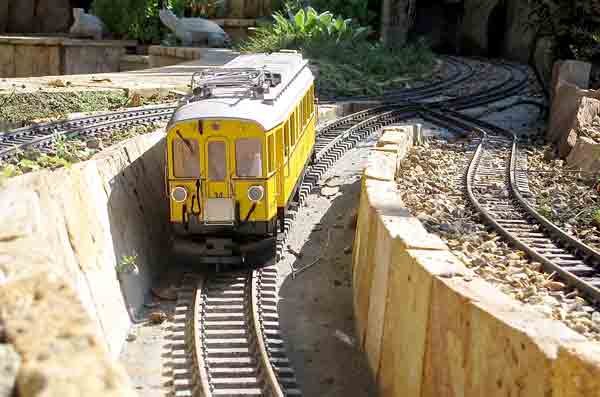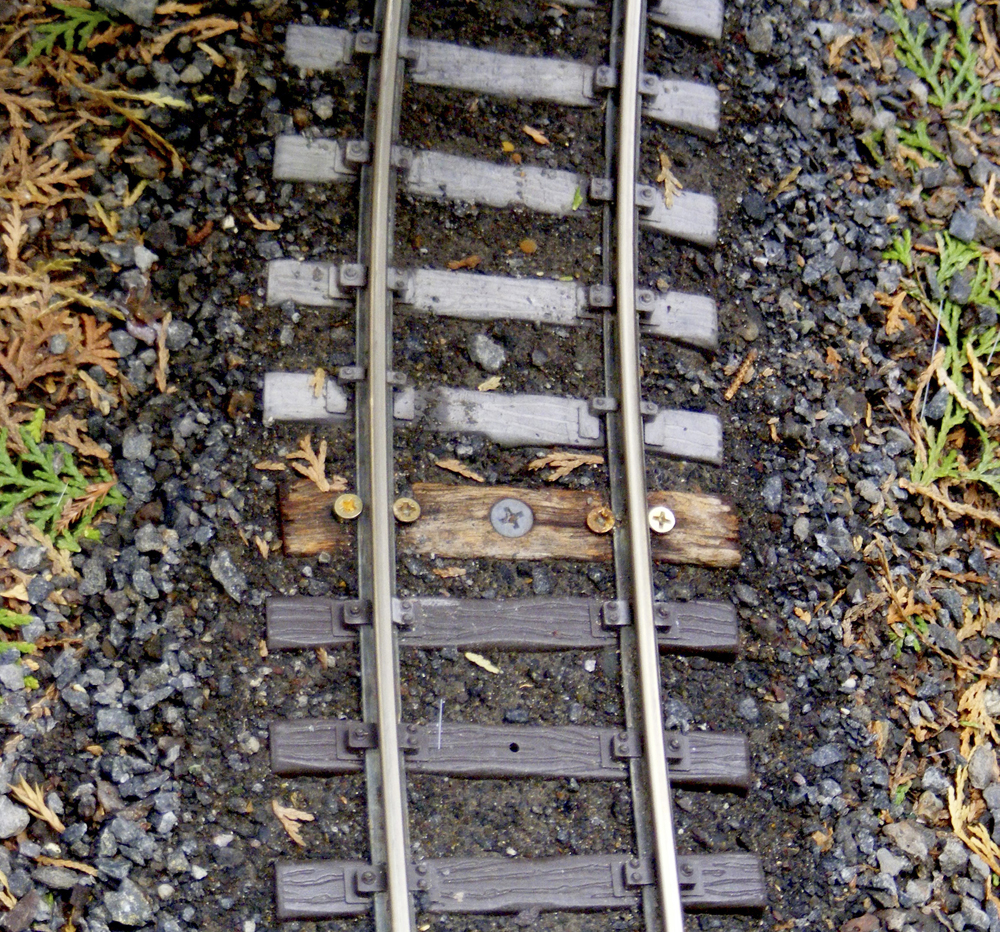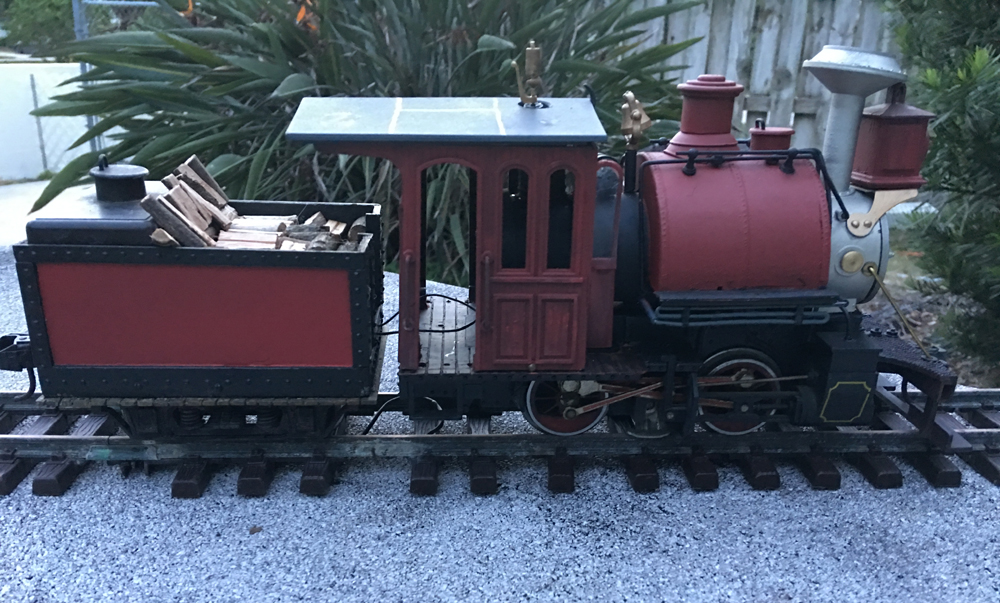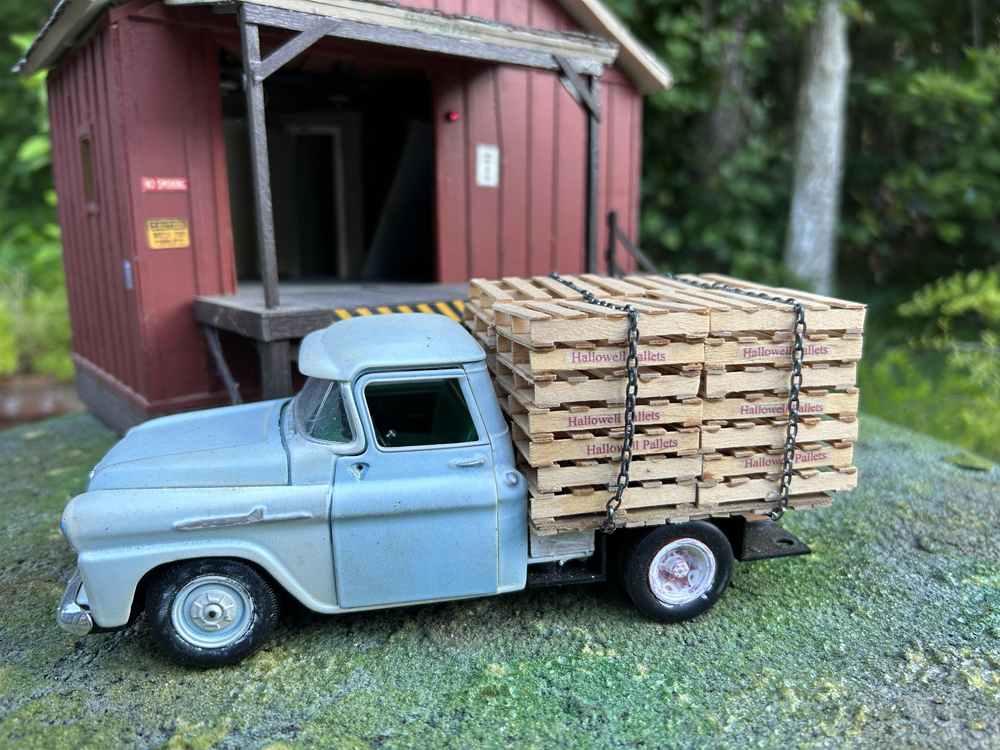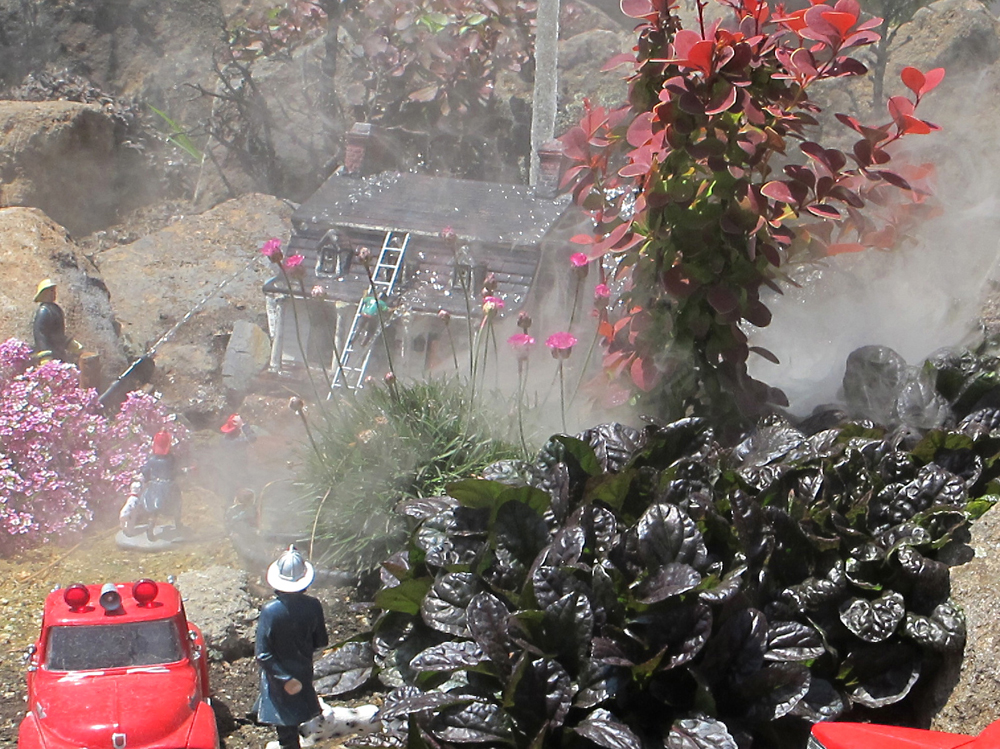Alamo, California, Zone 9
When using concrete forms to pour roadbed for track, I’ve developed a civil-engineering approach that works great for straight, curved, or sloping track.
1) Trench. Clear and dig about 4″ into ground to give a 4″-thick section of roadbed. We typically use an 8″-wide roadbed per track. Make sure the dirt is well compacted in the bottom of the trench.
2) Stakes. On the edge of the trench, drive in 2′ wooden stakes every 24″, following your trackplan.
3) Straights. If the railway is flat, you can use a long carpenter’s level to mark the forms. The same can be used if you have an elevation change and the track is straight.
4) Curves. When you are grading a curve or a long section of track, it is better to use a surveyor’s level, if available. You can also use a basic level or a laser level. A laser level allows this to be a one-person operation.
5) Grade. The math is simple to figure out the elevations for your forms. Start with a beginning point and an ending point. Measure the distance along the track between the two points. Using a surveyor’s level, measure the height difference between the starting and ending points. Convert all dimensions to decimal feet (if you are measuring in inches, divide by 12.): i.e., 6″ = .5′; 4″ = .33′; etc. Take this height difference (rise) and divide it by the length of track (run). An example would be 4″ rise in a 10′ run = .33 ÷ 10 = 3.3% grade.
6) Marking. Use this technique to calculate elevations for each form stake you put along the roadbed at 2′ intervals. If the first stake is 2′ away from your starting point, the grade will be 2′ x .033′ = .07′ of grade change in 2′, or 7/8″. Repeat these calculations all along the roadbed. If you are already using an existing surface as a form, such as stones, landscaped walls etc., Shoot the elevation you need for grade and mark the stones instead of using form stakes.
7) Forms. Once you have marked all of your stakes with the elevations of the roadbed, it’s time to attach your form to the stakes. Garden benderboard or Masonite works well. The top of the form must line up with the elevation marks on your stakes.
8) Changes. At locations where you are changing grades, such as going from flat to a hill, a little artistic license is necessary. You can either calculate the change using a vertical-curve formula, or simply eye the transition. We usually just set a section of track right on the wet cement and try to smooth out the transition, using the track as a guide. This way our trains will ride smoothly. Wash your track when you are done so the wet cement does not stick to the ties!
9) Pour. Before you pour the cement, make sure to account for any wires or utilities (present or future) running under the track. Then pour the cement. Remove the forms in the green stage and clean them for reuse. Wait two weeks for the concrete to cure before walking on it.





